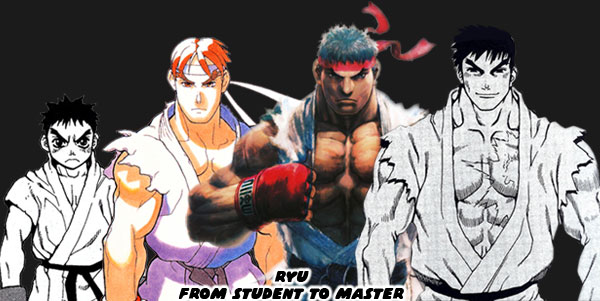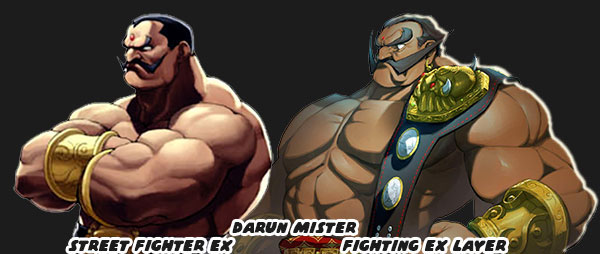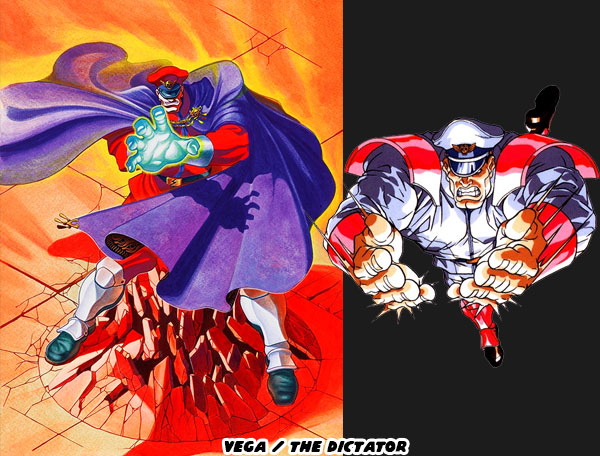G’s motives may be noble but there is a dark undercurrent carrying his inclusion in the series. Any man that forces himself as a leader on the global stage is a narcissist, a despot or a tyrant. G has delusions of grandeur and sadly, the physical properties to make him appear superior to normal people. G is a reflection of several world leaders that we are dealing with right now, especially in the USA. I’ll get to this comparison in a bit. Did you notice that G is covered in golden marks? They look like golden tattoos. In the original design notes these golden patches were shaped after the continents. Without his jacket you would be able to see that each golden patch outlines the nations of the world. The cover his arms, torso and neck. Visually it is an interesting look. There is a lot of contrast with gold, especially over bare skin. Gold has actually been used in cosmetics going back thousands of years. Some makeup artists actually apply gold leaf to to the skin for aesthetic reasons. I don't know if these markings on G are makeup, tattoos or even a skin condition.
Before G was introduced there was a lot of speculation to his design. He has a very unique look, however it is not completely original. Above I mentioned that he already takes cues from Lincoln and Sam, but in the fighting game world there have been others like him. Steven Chavez posted a theory that Du Nguyen and Xavier had circulated on Twitter. Namely that G was actually Greg, a character from Bloody Roar, a game by Hudson Soft released in 1997. Bloody Roar was a unique fighting game. There were masters of various arts in it, this was nothing new to the genre, however these characters also had the ability to transform into animal-like avatars. Audiences have seen werewolves and even werebears in popular culture but Bloody Roar also gave us weretigers, wererabbits and even weregorillas. Plus this game was another title built on 3D technology. Hudson Soft was not know for their fighting game library but they proved that the shift in fighting games from 2D to 3D was more than a fad. The similarities between G and Greg were eerie. Top hat, bodybuilder physique, large beard were all spot on. Plus there was an ape teased in Ed's ending in Street Fighter V. It stood to reason why some in the fighting game community saw this as the alternate form of G.
I've said it before and I'll continue saying it. No character design exists in a vacuum. Influences from pop culture help color each design. It doesn't matter if you're an artist in Japan, the US or anywhere else in the world. Whether consciously or subconsciously the artists creating these new fighters are all putting in their own insight and tastes. This can sometimes include elements seen in other fighting games, action movies, comics or cartoons. Changes in music, movies and even politics helped shift the public perception of fighting game characters. In the earliest days of the genre fighting games featured martial artists. They were easy to create and were universally recognized as being fighters. As the genre took off so too did the types of characters that could be considered fighters. The industry tried different things out and audiences responded accordingly. Robots, aliens, dinosaurs, demons and superheroes were all used to replace the tried and true kung-fu archetypes. G is the latest version of a more contemporary design. His look is rooted in ultra wealthy and ultra powerful villains.
Fatal Fury (1991) introduced the world to Geese Howard, a martial arts master that was also a crime lord that ran the fictional South Town. He was a break in tradition from the boss characters that were simply martial artists. Geese could have been a bad guy in a modern action movie. One which featured drugs, cops and murder instead of fantasy swordplay. Howard wasn't the first villain in a fighting game to be the kingpin type. Belger, from Capcom's Final Fight in 1989 and Mr. X from Sega's Streets of Rage were also mobster-type villains. Geese was unique in that he was in a fighting game and a powerful opponent. SNK pushed the concept of powerful leader even further in Fatal Fury 2 (1992). Wolfgang Krauser von Stronheim, the half-brother of Geese Howard, was the new sponsor of the King of Fighters tournament. SNK wanted Krauser to have the look of a European aristocrat. He was wearing a cape and sporting golden armor in his character intro. He did not have the same moves or techniques of Howard but he was still a powerful opponent. It was not the first or last time the aristocratic design would be featured in their extended universe.
King Leo, the main villain in SNK's Savage Reign (1995), also sported royal colors and golden armor. With his ornate mask and elaborate headdress he pushed the idea of eccentric villain even further. A somewhat subdued doppleganger named King Lion also appeared in the same game. Within two years SNK had established that rich, powerful, and corrupt men were the new boss templates. Sagat from the original Street Fighter (1987) was still an icon but he represented the first generation of villain. Someone with a limited role outside of fighting. Vega / the Dictator from Street Fighter II (1991) would become more influential to the story and boss designs for the universe. Vega, like Geese Howard, was not a traditional martial artist. Because of that he could be placed in much more interesting locations and force the playable characters to appear out of their element.
Without a doubt the biggest shift in villain designs happened in 1994 with the introduction of Rugal Bernstein. The newest benefactor of the King of Fighter's tournament was a groundbreaking opponent. SNK learned from all the design notes that went into Geese and Wolfgang and created a hybrid of the two. He had the size and power of Krauser, with the balanced techniques of Howard. Plus he was a very sharp dressed man. He didn't wear armor or any other martial arts costume but instead wore black and red tailored suits. Nobody looked half as fresh as Rugal when he debuted. SNK wanted him to stand out and they succeeded. Despite being a new to the universe audiences instantly gravitated towards his design. Nobody else in the genre looked or fought like him. His wide arcing kicks and powerful punches could take down the strongest opponents. SNK demonstrated in the game that Rugal could easily take on a team of three fighters, even if that group included Terry and Andy Bogard and Joe Higashi, the stars of the original Fatal Fury. To help frame how much influence this new boss had had the studio created one of the most memorable stages ever.
Rugal flew the best team in his tournament to his personal aircraft carrier, named the Black Noah. As a background detail this is important. An aircraft carrier of its size costs around $6 billion, when fully loaded with aircraft, supplies and a private soldiers that number rises to almost $30 billion. Now consider that we don't even see the extent of Rugal's personal wealth. We have no idea how big his private army is or what he actually controls. We do know that he has enough money and influence to buy a navy and even decorate the bridge with paintings, lavish rugs, a grand piano and keep a pet panther there. This level of opulence makes for fantastic storytelling. It helps frame Rugal's impact on the world. He is much more important to the SNK universe than just about any other villain. The King of Fighters '94 was a major milestone for the genre. It connected the timelines and characters from the Fatal Fury and Art of Fighting series. Also it connected the characters from arcade gems Athena (1986), and Ikari Warriors (1986). Other fighting games would be influenced by the direction of these new fighting games and especially from the new villain archetype. The introduction of Heihachi Mishima in Tekken (1994), and Gill in Street Fighter III (1997) solidified the shift in this design. Karate fighters and kung-fu masters were no longer doing battle against other martial artists, they were now literally saving the world from tyrants.
Capcom was actually close to creating their own version of Rugal. An ultra powerful, aristocratic, multinational, authoritarian villain. They were not the only studio that was on the same path. Dream Factory (developers behind Tobal No. 1) also happened to be headed in the direction of a blonde-haired, red suit wearing villain. Whether coincidence, zeitgeist or something else entirely the Antonov made his debut as the "first champion" of King of Fighter's tournament. He appeared as a cigar chomping mogul in the King of Fighters XIV (2016). His design is nothing new. Years ago I mentioned that he was pretty much based on a comic book character called Asimov.
Antonov is a master of the Siberian Gold Fist. An almost unparalleled form of boxing. He is the most recent retelling of the power hungry despot but his roots are a bit on the nose in this current political climate. It is well known that Russia has been dealing with oligarchs for some time. A few very wealthy and very influential people are consolidating power, killing their political enemies, dissenters, members of the press, and destabilizing rival nations. I wouldn't go so far as to say that Antonov is the Putin of fighting games, any more than G is the Trump of villain designs. Both however are instead a reflection of the changing global perceptions. Antonov and G are examples of how power corrupts. A decade ago the world still saw the USA, specifically the US leadership favorably. An example of this in fighting games was with the character Andrew.
Andrew debuted in Samurai Shodown 6 (2005). The series by SNK was based around the time where firearms were changing the world. Guns were replacing swords, the era of the samurai was coming to an end and cowboys and indians ran the wild west. Andrew was a new American character, he was actually a young president that enjoyed fighting. His design was a mix of fantasy and aristocracy. The Japanese artists took tremendous liberties with his look. Soldiers in the early 19th century didn't look anything like this anime character. Had SNK done a little homework they would have realized that the continental army didn't have long red coats. Those were the colors of the British uniforms during the American Revolution. Blue however was already assigned to the other American character, the blonde ninja Galford. SNK went heavy with the pandering. The inclusion of the White House as a stage and an epic electric rock guitar version of the Star Spangled Banner-meets-Stars and Stripes Forever for his stage music were as gung-ho USA as you could possibly get. Despite being presented in a patriotic light there was something authoritarian about the character.
Andrew confessed to Galford in the story mode that he didn't fight for freedom as much as he fought for domination. He was trying to create a literal "New World Order" a sort of United Nations where unfortunately votes were not exactly equal. It would be Andrew that ultimately called the shots. This character was inspired in part by Andrew Jackson, soldier and seventh president of the USA. He stood up to a British officer as a young man and carried the scar from his fight. Plus he participated in many duels. As inspiring as this sounded he was also responsible for one of the worst atrocities of any administration on US soil. Jackson pushed for the Indian Removal Act of 1830 which lead to the forced relocation and murder of thousands of Native Americans. This became known as the Trail of Tears. A version of that was retold in Samurai Shodown 6 with Andrew conquering South America and making sure that Europe and Asia all followed his lead. The developers at SNK knew that the US could be as imperialistic as the British and made sure to push the character in that direction. It was a light jab that predated the design of characters like G.
As for the gold over skin. Maybe it's a jab by Capcom at a certain president spending too much time with spray tans. Or maybe it's just a way to show off the neat effects that the Unreal engine can pull off. Sort of like the glowing tattoos of Necalli. I don't think it really makes or breaks the character. The solid black costume is a bit boring, despite the filigree and cut of the jacket. His top hat is painfully absurd, but no more than a red-skinned Turk or green-skinned Brazilian beast man. So is G a good design or a bad one? Me, I don't care much for his look. I do expect to see more villains with this shade of political coloring in fighting games as well as in other genres. Politics have always been a part of the genre. Whether it was saving President Ronnie in Bad Dudes vs. Dragon Ninja (Data East - 1988) or having Zangief dance with Mikhail Gorbachev at the end of Street Fighter II. The next generation will end up putting orange-skinned politicians in their stories. Mark my words. What do you think of this character? Does he work for you? Why or why not? If you would like to sponsor me please visit my Patreon page and consider donating each month, even as little as $1 would help make better blogs and even podcasts!











